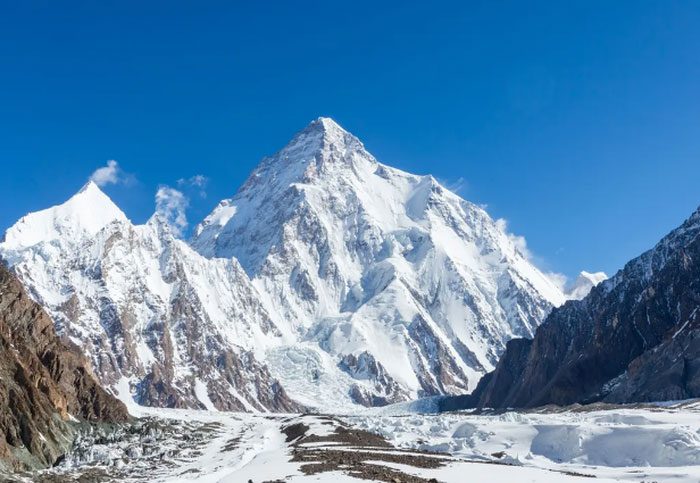According to the authors, this seemingly unusual finding is due to a phenomenon known as Katabatic winds—where cool, dry air from above is pushed down the slopes of the valleys beneath the Himalayas.
As global temperatures continue to rise, the peaks of many mountain ranges are experiencing climate changes that vary by altitude. Specifically, many mountain tops are warming significantly faster than other areas on the planet.

Glaciers in the Himalayas are responding to climate change by cooling the surrounding air. But how long will this last?
However, in the Himalayas, Katabatic winds are helping to counteract this trend, allowing glacial regions to maintain stable temperatures instead of warming. This is the conclusion of a new study by an international team of researchers, published in the journal Nature Geoscience.
Located on the southern slope of Mount Everest at an altitude of 5,050 meters, the Pyramid International Laboratory has recorded hourly meteorological data continuously for the past thirty years. During this time, the glaciers in the Himalayas have been continuously losing mass at an accelerating rate over the past few decades.
Francesca Pellicciotti, a glaciologist at the Institute of Science and Technology Austria (ISTA), stated: “Katabatic winds are characteristic and frequently occur at the glaciers in the Himalayas and the nearby valleys. However, from what we have observed, these winds are significantly increasing in strength and duration, potentially stemming from global warming. This leads to enhanced chaotic heat exchange at the glacier surface and cools the surface air”. As the authors describe, rising air temperatures seem to be driving higher temperature exchanges between the air and the glacier surface in the Himalayas.

Pyramid International Laboratory on the slopes of Mount Everest.
Dry, cool air from above becomes denser and forms air streams that flow down the slopes into the valleys, cooling the lower parts of the glaciers and the surrounding ecosystem.
This cooling effect is observed not only on the slopes of Everest but across the entire Himalayan range.
Despite the clear benefits of cooler air temperatures, the winds are not always good news for the glaciers. While they influence temperature, they also affect precipitation, with data showing that the winds have reduced snowfall at higher elevations, negatively impacting glacial mass.
In other words, Katabatic winds on the glaciers in the Himalayas may simply be an emergency response to climate change rather than a sign of long-term stability.
Nonetheless, researchers say this phenomenon helps prolong the life of the glaciers and the surrounding ecosystems. How long this prolongation lasts remains a question they hope to answer in the future.
Pellicciotti added: “Even if the glaciers cannot preserve themselves indefinitely, they can still conserve the surrounding environment for a time.” “Therefore, we call for more interdisciplinary research approaches to focus efforts on understanding the impacts of global warming.”


















































